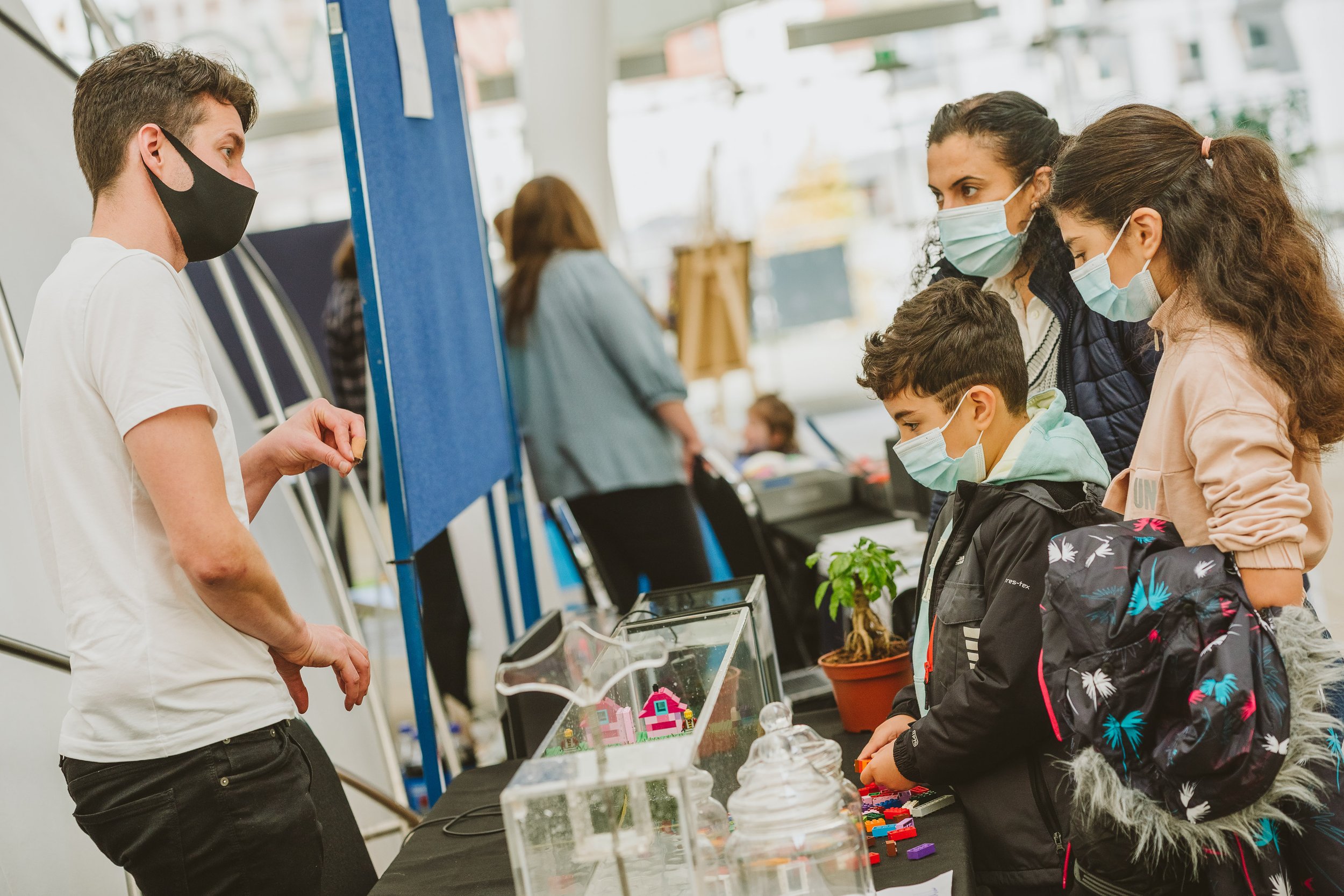COP26 side-event on “Coastal vulnerability and social-ecological adaptations”
Cai Ladd, Emilie Cremin, Ying Zheng, Lea Stolpmann, Michael Erik Sandager, Kangyong Zhang (University of Glasgow) with the great contribution of Ly Ha Buy (CRES, Vietnam), Hieu Hong Hua (Can Tho University, Vietnam), Sumana Banerjee (Jadavpur University, India), Tanh Nguyen and Lan Nguyen (An Giang University, Vietnam)
Role of coastal wetlands in protecting against coastal flooding, led by Cai Ladd
Participants had the opportunity to try and flood a Lego coast with/without coastal wetlands in a wave tank. The display shows how coastal vegetation buffer wave energy and protect against flooding from storms and Tsunamis. The exhibit was designed to have broad appeal across age groups and backgrounds. The “splash factor” of the wave tank was particularly appealing to young families. The Mini Buoy, a novel open-source sensor developed within Living Deltas Hub, demonstrated how coastal hydrology can be monitored to improve mangrove restoration. The tank model and the Mini Buoy sensor has shown the innovative ways in which we are monitoring threats to coastal habitats and livelihoods in a changing climate.
Photos: Demonstration of the effect of coastal management (a coast with sea weeds or mangrove, with a sea wall, or without any protections) with a wave tank. The coast gets more flooded without any protections.
Absorption of CO2 in coastal wetlands, led by Ying Zheng
Audiences also learned that coastal wetlands are important stores of ‘Blue Carbon’, by watching the soil ‘breathing’ via the real-time changes in CO2 level displayed on a Licor CO2/H2O gas analyser. The CO2 released from a small plant was captured by a mini ‘chamber’ and monitored by the gas analyser through two tubes. The CO2 chamber showcased how the GHG gas can be measured in the natural environment. Combined with the flooded coast model in the wave tank, it further demonstrates the risk of blue carbon loss in coastal degradation facing pressing climate changes, which provided a great talking point for the general public on the widely reported topical issue of GHG emission reductions.
Photo: Monitoring the absorption of CO2 by a mangrove tree.
Raising the voice of local people and communities, led by Emilie Cremin
Eight posters and several slideshows from our Living Deltas Hub team were presented, creating a space for in-depth discussions on the challenges and solutions to coastal resilience in the Mekong, Red River and Ganges-Brahmaputra-Meghna River deltas (livingdeltas.org). Our teams’ videos were presenting how we are engaging local coastal communities in focus group discussions. Through these focus groups, communities are invited to share how they are affected by climate change, and what steps they are taking to adapt. Our display aimed at raising awareness among the public about the lived experiences of communities from the most climate-affected countries in the world - where sea level rise, increased storm severity and other hazards are affecting communities' livelihoods health and wellbeing. Visitors were also invited to participate in a quiz about people's perceptions of coastal vulnerability. You can still participate in the quiz here! This exercise shows to the public how we come to understand the workings of coastal communities.
Solutions to solve the climate crisis
Our exhibit engaged with the general public, managers, and policymakers in sharing the novel solutions for monitoring and restoring natural environments. We showcased how Nature-based Solutions along tropical and temperate coastlines can be implemented. A take-home message from our exhibit was that enhancing natural and nature-based features offers a way for future generations to manage the coast sustainably and tackle the main societal issues around climate change adaptation and mitigation.
The exhibit was also of relevance to the ‘Adaptation and Resilience’ and ‘Nature’ UK Presidency campaigns for safeguarding people, nature and economies from the impacts of climate change, and for helping humanity adapt and build resilience in the face of climate change. We demonstrated how coastal management can include natural and nature-based features to enhance flood protection and boost biodiversity. We discussed the myriad of additional benefits society receive when building with nature, especially how protecting and restoring coastal wetlands enhances the sequestering and storing of Blue Carbon.
Photo: Our Team from the left to the right: Michael Erik Sandager, Ying Zheng, Lea Stolpmann KangyongZhang, Emilie Cremin, Cai Ladd, (University of Glasgow)





